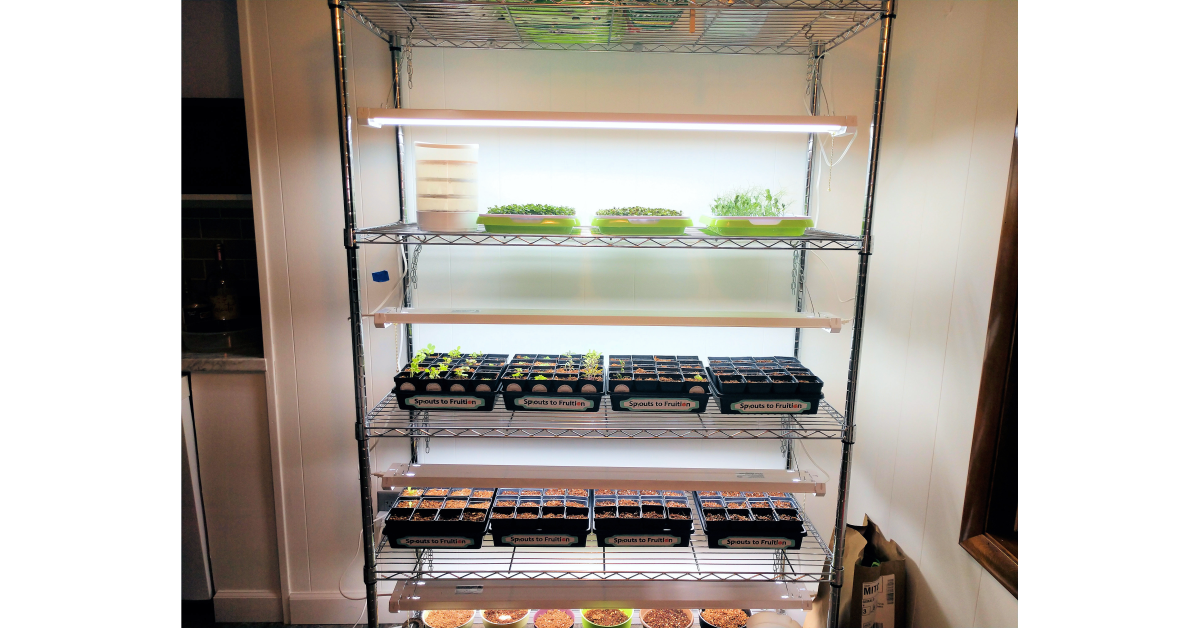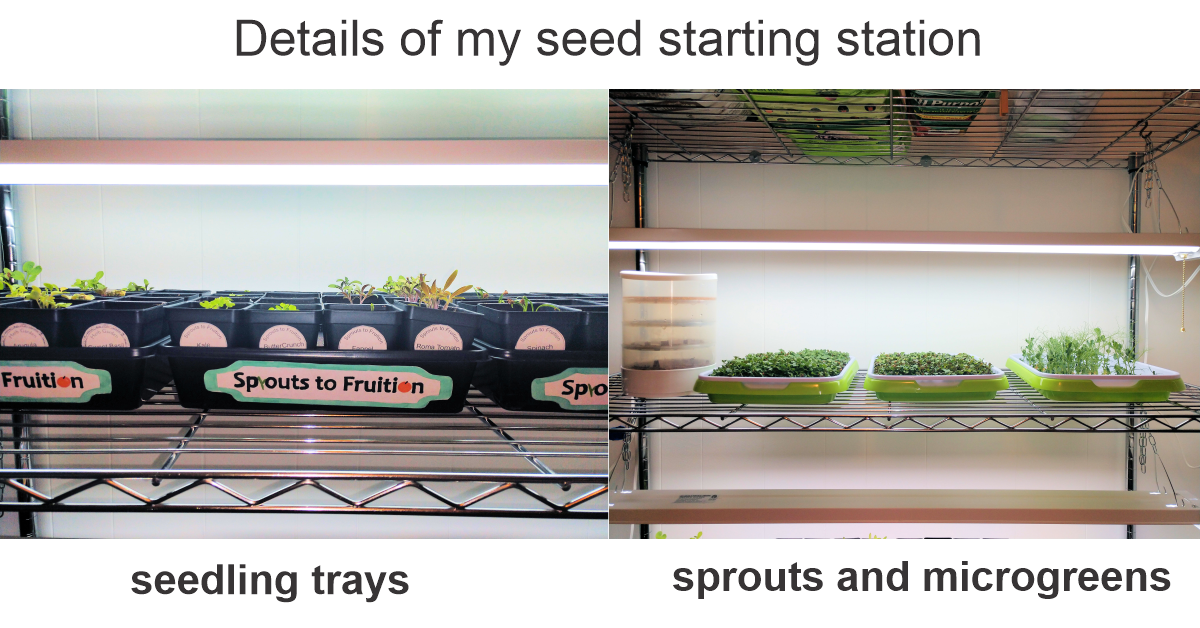Setting Up An Indoor Seed Starting Station

It is February and the ground outside is still covered in snow. Winter is cold and long where I live (Zone 5). However, starting seeds indoors is a great way to lengthen the growing season. This post is a guide for beginner gardeners who wants to set up a seed-starting station indoors.

The following is an example seed-starting setup, as well as why I chose these items. If you want to support my site, please consider purchasing through my affiliate links.
Shelving unit (affiliate link):
This shelving unit will fit into a floor space of 18 X 48 inches and is 76 inches tall. Remember to measure your room first before you decide to purchase any shelf unit so it will fit. The shelf is tiered and can hold up to 600 lbs per shelf. It is a great space saver if you want to start multiple trays of seeds. I also like the chrome finish because it goes well with our light-colored kitchen wall.Lighting (affiliate link):
This set of LED shop light works great as grow light and is relatively inexpensive comparing to some of the high-end LED grow lights. They fit perfectly on a 48-inch wide shelf. See the section below for a more detailed introduction about plant lights.Smart Plugs (affiliate link): Indoor seedlings require 14-16 hours of lights each day. Using these smart plugs, you can set up a schedule to control when the grow lights turn on and off.
S-hooks (affiliate link): using S-hooks and chairs to hang lights. The hight of lights can be raised or lowered easily.
Nursery pots and trays (affiliate link): These individual pots can be arranged easily.Each pot has holes on the bottom, and the tray can hold water. So you can water seedlings from the bottom. This prevents running water damaging young seedlings.
Seed sprouter (affiliate link): I wrote a post about how to grow sprouts at home. Check it out here
Microgreen trays(affiliate link): A review of these trays and microgreen tutorial is underway.
Home-made seed-starting mix:
5 parts fully exapanded coco coir + 1 part perlite + slow-release fertilizer (amount varies, read instruction on packaging)
- Coco coir bale (affiliate link):
This coco coir bale is pre-washed. Unwashed coco coir contains too much salt for plants to grow. This particular coco coir bale is 5 kg in weight and can expand quite large when soaked. I purchased it mainly for use in an outdoor garden bed. If you are just trying to fill just a few containers, consider buying a smaller coco coir bale instead.
- Perlite (affiliate link):
Perlite is a lightweight soil amendment for improving aeration and drainage in your seed mix.
- slow-release fertilizer (affiliate link):
You can use this all-purpose fertilizer indoors and outdoors. Pure coco coir and perlite do do not provide a lot of nutrition to the plants. I add the fertilizer to my growing mix once the seedlings enter the true leave stage. Since it is slow-release, the nutrient concentrations are not too high to hurt your plant roots. Each feed can last up to 3 months.
- Decorative labels (FREE printable PDF): Created by me. I include both a colored version and a black-and-white version so you can color them yourself. Print on sticker paper and cut to shape. Add a pop of color to your trays.
Decorative labels
What type of light is best for growing plants indoors?
Good lighting is vital for seed starting and indoor growing. Insufficient light will cause your seedlings to be weak and leggy. There are all kinds of lights, some can be expensive. When you choose your grow light, consider the following criteria:
Light quantity. The total quantity of visible light emitted by a light source per unit of time is measured in Lumens. Insufficient light will cause seedlings to be weak and leggy. Try to choose a light that is at least 3000 lumen.
Light quality. Plants benefit the most from the red and blue wavelengths of the light spectrum. The color temperature of LED lights is measured in Kelvin (K), where the 4500K – 6000K range mimics the natural sunlight, which provides plants balanced red and blue lights for growth.
Temperature. Avoid incandescent lights. They create too much heat and may damage the plants.
Cost and energy efficiency. Both fluorescent and LED lights are good choices for grow lights. Fluorescent lights are generally cheaper but use more electricity and LED lights may be more expensive initially but they save electricity in the long run.

